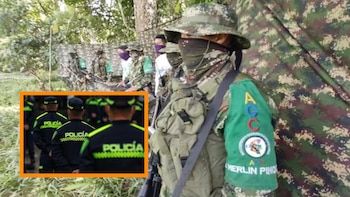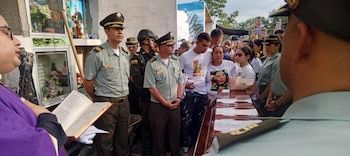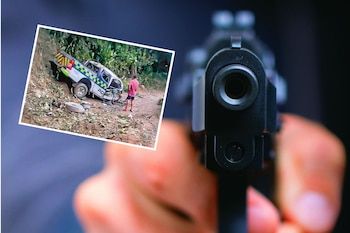The death of 41 uniformed between January and March 2025, according to official figures of the Ministry of Defense, not only marked a tragic record at the beginning of the year, also lit the alarms for the sustained increase in attacks on the public force. Although the country already witnessed since the previous year an ascending curve in affectations to military and police, the first quarter of 2025 became the most violent of the last seven years. This panorama raises serious questions about the structural and short -term causes that triggered this escalation of violence.
Despite institutional efforts to contain illegal armed actors, the country witnesses how organizations such as the Gulf clan intensify their armed offensive. In fact, before concluding April, the number of homicides increased with at least 23 additional murders attributed to a new gun plan for this criminal group. This suggests not only well structured armed coordination, but a pressure strategy against the state and its agents in the territory.
Now you can follow us in our WhatsApp Channel and in Facebook.

The impact of the conflict on the public force became more noticeable after failed negotiation and approach attempts with some illegal groups. The inclusion of the Gulf clan in the so -called total peace is a reason for controversy. Although the organization expressed its intention to be part of this project, the continuity of its violent actions generated deep criticism of the viability of that approach. “An impromptu fantasy, designed without military head, without strategic intelligence, without a realistic road map,” was the hard judgment of former president César Gaviria about this government policy.
The government responded by announcing extraordinary security measures for order agents, many of which were addressed during the Council of Ministers. A reinforcement of offensive operations against the Gulf clan had already been anticipated, including the reactivation of the Agamemnon operation, which in the last decade is one of the main instruments of the State to hit that organization, heiress of demobilized paramilitary structures.
Despite this, President Gustavo Petro argued that the chaos narrative is more an argument of his opponents than a verifiable reality. “There is a slight tendency to decrease, but it is very slight to feel victorious. There is no chaos of violence in this government, that is a political and media lie, we have simply not being able to lower the Duke levels,” he said during a speech. Their statements, however, are questioned by sectors that consider that the public order situation deteriorated on several fronts of the country.

The historical data of the Ministry of Defense allow to see a worrying and sustained evolution over time. Although the highest peak of aggressions against the public force was recorded in 2021, with a total of 1,250 cases that included both deaths and injuries, during 2024 the figure increased significantly again, after two consecutive years of relative calm and decrease in the levels of violence.
In total, 582 uniformed affected were registered, of which 99 were killed and 483 were injured, representing a 24% increase compared to 2023, according to official figures released by the Ministry of Defense.

In the records of the first quarter of 2025, it is reported that of the 41 uniformed men killed, 26 were members of the military forces and 15 belonged to the National Police. This shows that the threat does not distinguish hierarchies or specialties within the state security structure, and affects soldiers equally in rural areas as patrolmen in urban environments.










